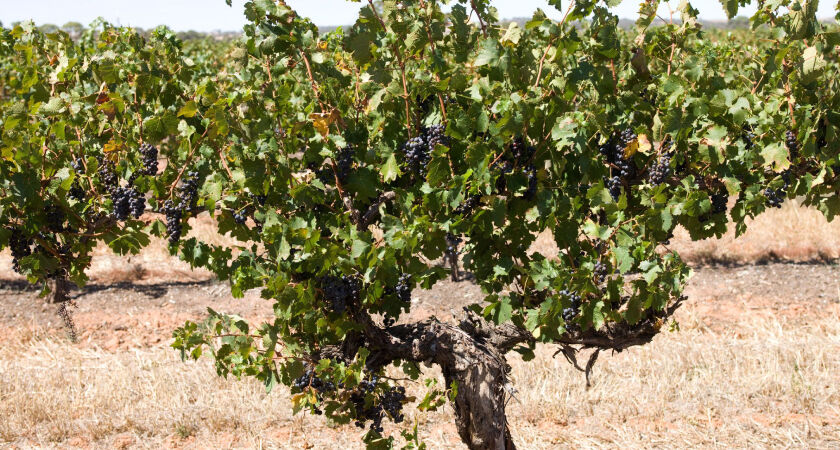Regional Spotlight: Barossa
RIGHT OF REPLY
Oi WineDown!! South Australia called – they want their crown back!
Fair enough. After back-to-back issues extolling Victoria’s innumerable charms it’s understandable that the country’s largest wine-producing state might be feeling a tad overlooked. But rest assured SA – we’ve got you! And just to prove it, we’re going big this week. No obscure regions or emerging pipsqueaks. This week, WineDown is going straight to the top...
BAROSSA VALLEY
It wasn’t the first, and it isn’t the largest – either by area or output – but Australia’s most famous wine region by a country mile, and arguably its best loved, is the iconic Barossa. More precisely, the iconic Barossa Valley. Barossa on its own is something different again. (C’mon, this is wine – did you think it was going to be straightforward?)
Barossa Valley is one of two recognised wine regions (the second is Eden Valley) within the broader Barossa Zone. Confusingly, Barossa Valley is not actually a valley at all, but several. It comprises a number of transverse valleys and gentle slopes of the foothills of the Barossa Range. (It should come as no surprise then, to learn that Eden Valley is not a valley either, but rather, a range of hills, flanking Barossa to the east. Happily, its sub-region – High Eden – is more intuitively named.)
Clear as mud? Then you’ll love this: Barossa is a misspelling of the original name bestowed by Colonel Light referencing Barrosa Hill (site of the Battle of Barrosa) in far-away Spain. In Spanish and Portuguese, it means muddy!
HISTORY
This world-famous region emerged from humble beginnings. In the 1840s, after its original inhabitants, the ancient Peramangk people, had finished using it,* British settlers arrived and began developing the region for agriculture.
*This is irony, not revisionism.
But it was the influx of Silesian émigrés, seeking little more than a quiet life and the freedom to practice their religion, that irrevocably changed the region, reshaping it both culturally and viticulturally. (Silesia was, historically, an inherited possession of the noble houses of Central Europe, and its people were generally inured to the whims of their aristocratic rulers. But when their newest monarch, the Prussian King Friedrich Wilhelm III, outlawed their prayer books, these stoic Lutherans saw red...)
From 1838, families by the name of Seppelt, Henschke, Lehmann, Gramp, Schulz and Burge, to name just a few, began arriving in South Australia, bringing treasured grapevines and a prodigious appetite for hard work. Guided by British pastoralist George Fyfe Angas, who was sympathetic to their situation, they headed for a fertile farming region they called Neu Schlesien, or New Silesia. We know it as the Barossa Valley.
CHÂTEAU TANUNDA
They settled on the valley floor, in and around the township of Tanunda (while English farmers occupied the more elevated township of Angaston). In the early years, grapes were grown mainly for sustenance and for making liturgical wine, but there was high demand from Britain and the colonies, and by the 1850s, commercial wine production had commenced. However, while the small holdings were certainly productive, the industry was scattered and disorganised. In the late 1880s, a consortium of British and Silesian-German growers pitched in to fund the construction of South Australia’s (then) second-largest building: an extraordinary oak, cast iron, brick and bluestone winery, capable of processing 100 tons of grapes in a day. When it was completed in 1890, the majestic Château Tanunda was the largest winery in the Southern Hemisphere. Barossa Valley had arrived on the world stage.
VALLET CLARET
The surrounding hills are cool, but it’s warm down in the valley – sometimes extremely warm, and humidity is low. Early viticulturists quickly realised that some varieties wouldn’t cut it in this continental-Mediterranean climate. Riesling, in particular, suffered from over-ripening on the hot valley floor. (In Eden Valley, and High Eden, it’s an altogether different story!) Other varieties such as Cabernet, Shiraz and Grenache were more successful, and these became the mainstays of the region, making ‘claret’, ‘burgundy’ and ‘hermitage’ in the European tradition. But the majority of the region’s wine was destined for fortification and sold as ‘sherry’ and ‘port’. By the turn of the century, Barossa Valley was the largest wine-producing region in the country.
FAME
Notwithstanding wars, depressions, and the general public’s inexplicable fondness for Cold Duck, Barossa Valley continued to grow and develop throughout the 20th century. The 1960s and 70s saw new generations of winemakers building on the foundations established by their pioneering grandparents and great grandparents, and by the late 20th century, the world began to notice. Rich, full bodied, dark-fruit-and-spice Barossa Shiraz was decidedly different from Old World Syrah, and Europe and the UK went gangbusters for it. When US wine critic Robert Parker (arguably the greatest wine influencer on the planet) started throwing around 100-point scores and rave reviews, Barossa’s reputation was sealed.
THE BOSS
Thanks to South Australia’s relative isolation, and its stringent quarantine laws, Barossa Valley is home to some of the oldest continuously productive grapevines in. the. world.
The Barossa Old Vine Charter preserves and promotes these ancient vines, which produce super-intense fruit – albeit in in tiny quantities. Venerable Ancestor vines (125+ years old) are found in the historic vineyards of (among others) Langmeil, Henschke, Château Tanunda and Penfolds – whose Cabernet vines on Block 42 at the famous Kalimna Vineyard are believed to be the world’s oldest Cabernet vines still producing wine. Like a Boss.
Explore The Regions
Barossa, South Australia
Barossa is a magnet for lovers of fine food and wine. Its classic Mediterranean climate, and free-draining red brown soils, makes the region ideal for growing grapes, arguably responsible for Australia's most iconic wine - the Barossa Shiraz.

